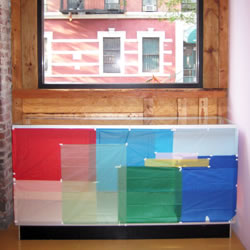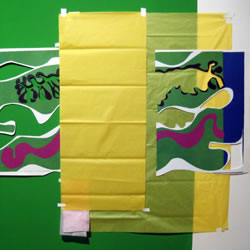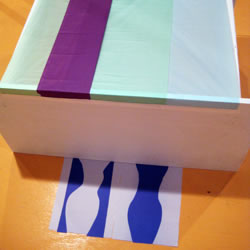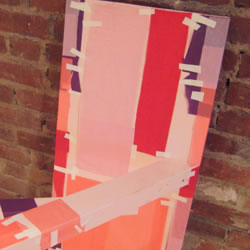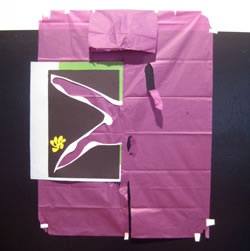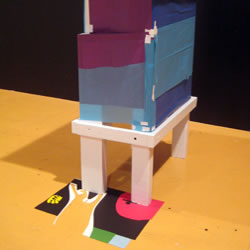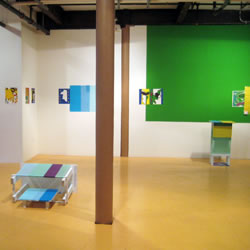

Main Space
Cutting Matisse (June 30- August 15, 2010)
This exhibition re-presented Matisse's Jazz, a loose-leaf book of twenty images published in Paris in 1947. The original book, conceived while the artist was convalescing from major surgery in 1943, is an early example of Matisse's work with cut-paper. Over the next decade -- until his death in 1954 -- cut-paper compositions defined his oeuvre.
Jazz is wrongly celebrated as a masterpiece in its own right. Despite its historical significance, it is, at best, a transitional work. Many of the images suffer from a surfeit of decorative elements that lack in arresting ambiguity: aquatic plants, carriages, horses, and gingerbread-like men. Its narrative progression is jumpy and haphazard (not syncopated and improvisational, as is often claimed) and it lacks an overlying theme. The text Matisse wrote in 1946 -- three years after completing the majority of the images -- is cloying and notational.
Viewed in Harlem, however, or with a sensitivity to African American culture, he book contains potent moments, some unintentional. Its best-known image is a silhouette of Icarus falling through a twinkling night sky. Rendered in black paper, Icarus could be understood as the symbolic of the over-reaching of the black-man during the early days of the civil rights struggle in the U.S. Moreover, Jazz can be criticized for interpreting a chiefly African-American musical form not as sophisticated and complex, but rather as the product of a child-like, primitive mind.
This re-presention of Jazz at Triple Candie consisted of pages cut from the original book, adorned with colored tissue and tape. Most of the pages were taped to the walls, though some were placed on or accompanied by altered sculpture stands or a glass display case, and a few lay on the floor. Images taht could be conceived as racially pejorative were not included, nor were Matisse's handwritten texts. Additionally, the display broke from the book's original sequencing.
The exhibition was presented concurrent with Matisse: Radical Invention, 1913 - 1917, at the Museum of Modern Art.
